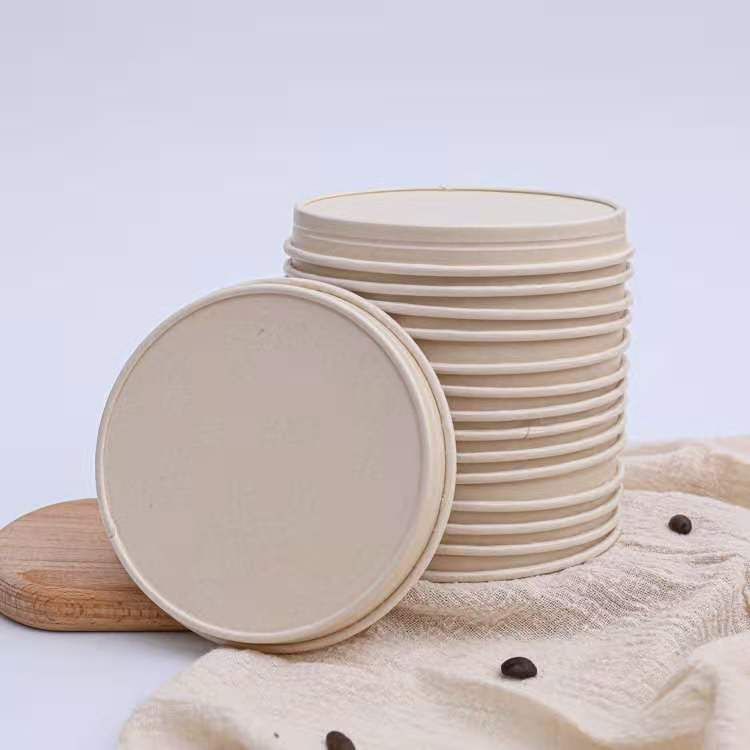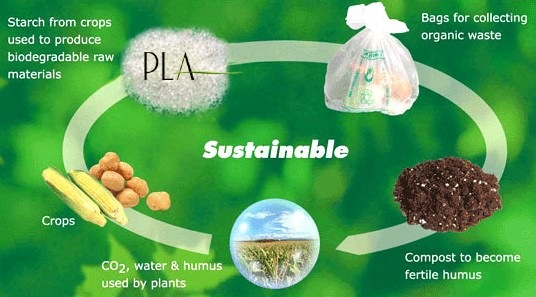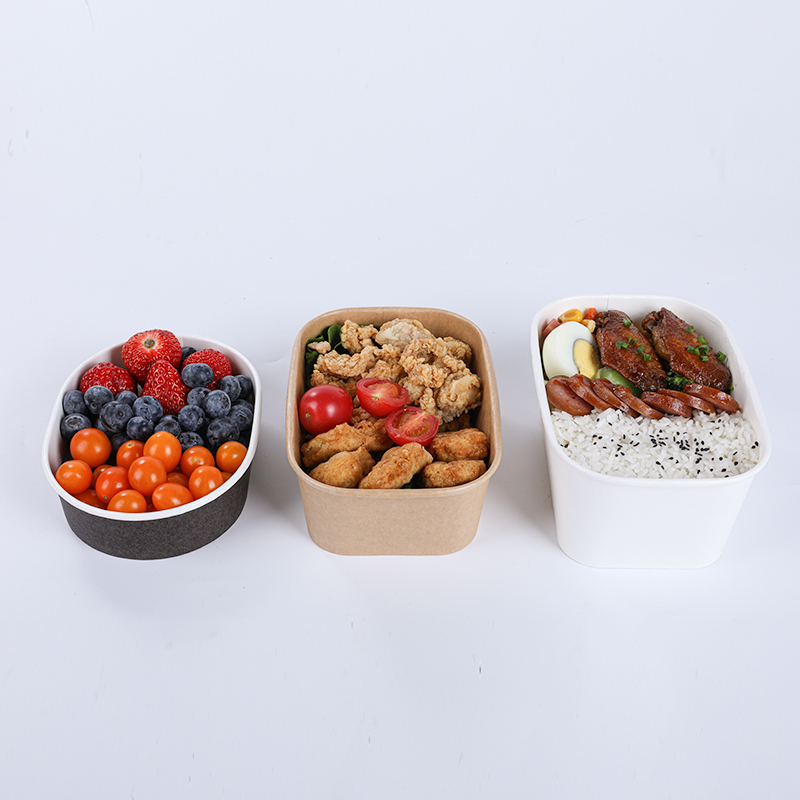Categories
The advantages of PLA material
Dec 29 , 2020
PLA material
Polylactic acid is also called polylactide and belongs to the polyester family. Polylactic acid is a polymer obtained by polymerization of lactic acid as the main raw material. The raw material source is sufficient and renewable. The production process of polylactic acid is pollution-free, and the product can be biodegraded to realize the circulation in nature, so it is an ideal green polymer material. Polylactic acid (PLA) is a new type of biodegradable material. The starch raw material extracted from renewable plant resources (such as corn) is fermented into lactic acid, and then converted into polylactic acid through polymer synthesis.
Glaman food grade biodegradable ecoproducts (paper lids and paper bowls) are made of bagasse paper,bamboo pulp paper and paper cup paper with PLA coated, which are 100%biodegradable and compostable.


2. Polylactic acid is suitable for various processing methods such as blow molding and injection molding. It is easy to process and has a wide range of applications. It can be used to process various food containers, packaged foods, fast food lunch boxes, non-woven fabrics, industrial and civilian fabrics from industry to civilian use,such as Glaman biodegradable disposable paper cup lid ,12oz hollow double wall paper cups and compostable food grade rectangular paper bowls. And then processed into agricultural fabrics, health care fabrics, wipes, sanitary products, outdoor anti-ultraviolet fabrics, tent fabrics, floor mats, etc. The market prospect is very promising. It can be seen that its mechanical and physical properties are good.

4. Good compatibility and degradability. Polylactic acid is also widely used in the field of medicine, such as the production of disposable infusion equipment, non-dismantling surgical sutures, etc., and low-molecular-weight polylactic acid as a drug sustained-release packaging agent.
6. When polylactic acid (PLA) is incinerated, its combustion calorific value is the same as that of incineration paper, which is half of that of traditional plastics (such as polyethylene), and the incineration of polylactic acid will never release toxic gases such as nitrides and sulfides. . The human body also contains lactic acid in the form of monomer, which shows the safety of this decomposable product.
7. Polylactic acid (PLA) film has good air permeability, oxygen permeability and carbon dioxide permeability. It also has the characteristics of odor isolation. Viruses and molds are easily attached to the surface of biodegradable plastics, so there are concerns about safety and hygiene. However, polylactic acid is the only biodegradable plastic with excellent antibacterial and antifungal properties.
Today, when resource conservation and environmental protection are increasingly valued, can plastic be replaced and upgraded? The widespread use of degradable biomass material-polylactic acid (PLA), not only can alleviate the resource dependence caused by the "oil crisis", but will also completely eradicate white pollution. Ren Jie, a professor at Tongji University and a well-known polymer material expert, called on my country to promote the rapid development of the polylactic acid industry.
According to Ren Jie, the main advantages of polylactic acid are: first, the raw materials are easily available and renewable, suitable for large-scale intensive production; second, the air permeability, transparency, gloss and hardness, tensile and flexural modulus can be compared with traditional plastic resins. Comparable; the third is better biocompatibility. The monomer raw material L-lactic acid is an endogenous active substance in the human body, so polylactic acid products are non-toxic and non-repellent to the human body, and can be absorbed by the human body. It can be made into medical tissue skeleton materials and medical carriers and used in the human body safely. , And obtained US FDA certification; fourth is completely degradable. It can be degraded into carbon dioxide and water when buried in the soil for 6-12 months.